- 26 Jun 2023
- 4 Minutes To Read
- Print
- DarkLight
- PDF
Importing Your Data via Excel
- Updated On 26 Jun 2023
- 4 Minutes To Read
- Print
- DarkLight
- PDF
Getting started
You may import data into Mambu by filling out an Excel template that we provide and submitting it with the Mambu UI. This can be convenient if your legacy system exports data in CSV format. Importing transactions via Excel will not create accounting Journal Entries.
Your imported spreadsheet must be five megabytes or smaller. If you need to import more data than you can fit in a file of that size, you must split the data into multiple submissions. For more information, see Excel Migration Template.
In most cases, we recommend importing your data into Mambu using the Mambu API or a combination of the Mambu API and spreadsheet-based import. For more information, see Data Management Overview - Importing Data.
Before you begin, there are some preliminary steps in setting up your organization that must be completed. For more information, see Data Management Overview - Import Prerequisites.
Download the Excel template
You will find our Excel import template in the Mambu UI under the Data tab of the Administration section.

The spreadsheet contains two types of sheets:
- Empty sheets to fill in with data: including Clients, Groups, Loan Accounts, Savings Accounts and Chart of Accounts. These sheets have green cell titles.
- Sheets with data: such as IDs to be used as a reference when filling the others, including Branches, Credit Officers, Centres, Loan Products and Savings Products. These sheets have gray cell titles.
All sheets are editable.
The provided template uses an XLSX extension - do not change this extension, or you will not be able to import it into Mambu. An XLS file will not pass validation.
For a complete reference guide to the Excel template, see Excel Migration Template.
Fill in the Data
The template can be either manually filled from your old system or you can use mapping tools.
Each sheet contains field validations. For example, mandatory fields cannot be empty and specific date formats are required. Please review the validation rules in Excel Migration Template to ensure your data is entered correctly.
Import the file into Mambu for validation
Once you have entered all your data in the Excel template, the file is ready to be imported. During the import process, your data is automatically validated by Mambu.
To begin importing your data, go to Administration > Data. Click on Choose File and select the file you want to import. Then, click on the Import Data button. Note that the Import Data button is not active until a file has been selected.

During the import process, a progress bar shows the percentage of data that has been imported.
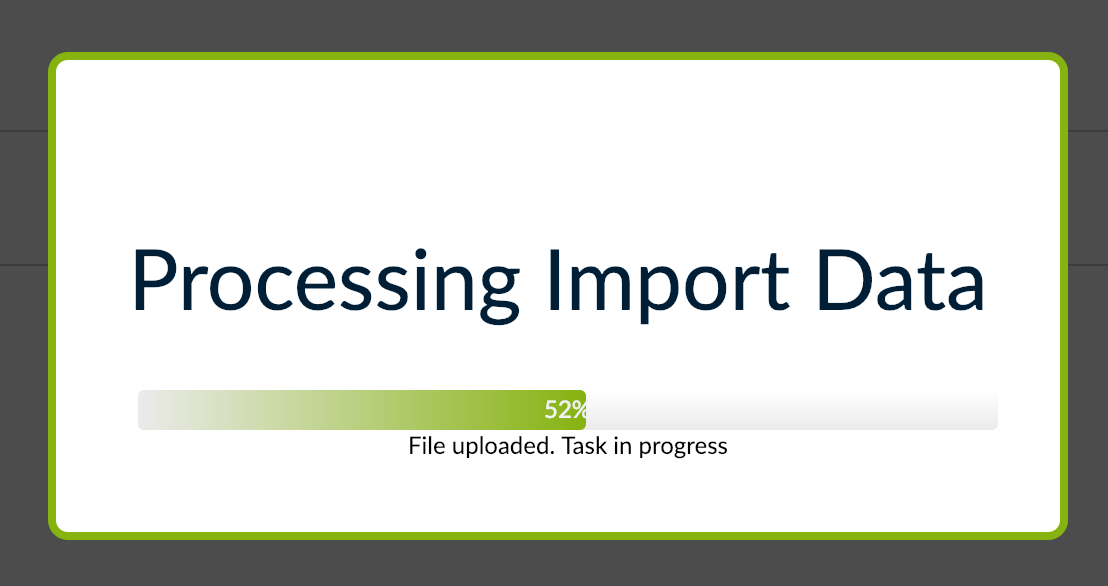
The imported data is displayed in the Mambu UI and the process continues automatically to the approval stage. During this period, an orange bar at the bottom of the screen notifies users that the data migration is in progress.
No action can be taken in the Mambu UI during the approval stage of the import process.
The status of the uploaded file is Draft during this phase.
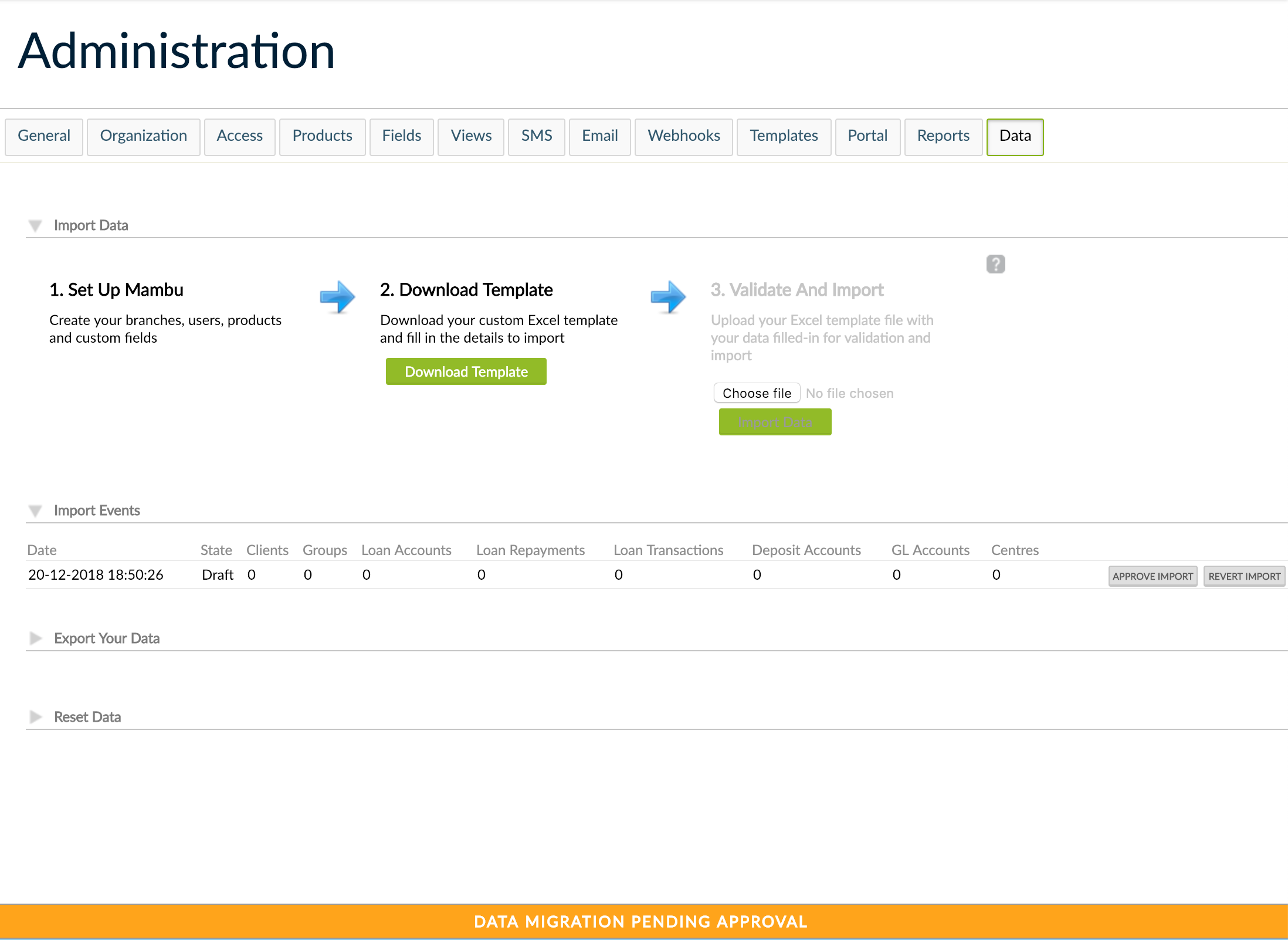
During this process, we recommend navigating through the Mambu UI to do an initial check that everything is working correctly and your data appears correct.
Validation unsuccessful: handling errors
If your submitted data contains errors, you will see a notification message and an Excel file that includes all errors, displayed in cells highlighted in red. The error report will include comments about how to fix any problems in the Errors sheet, which is the last sheet in the file.
Once you have corrected any reported errors, you may resubmit your corrected data by repeating the import process described above.
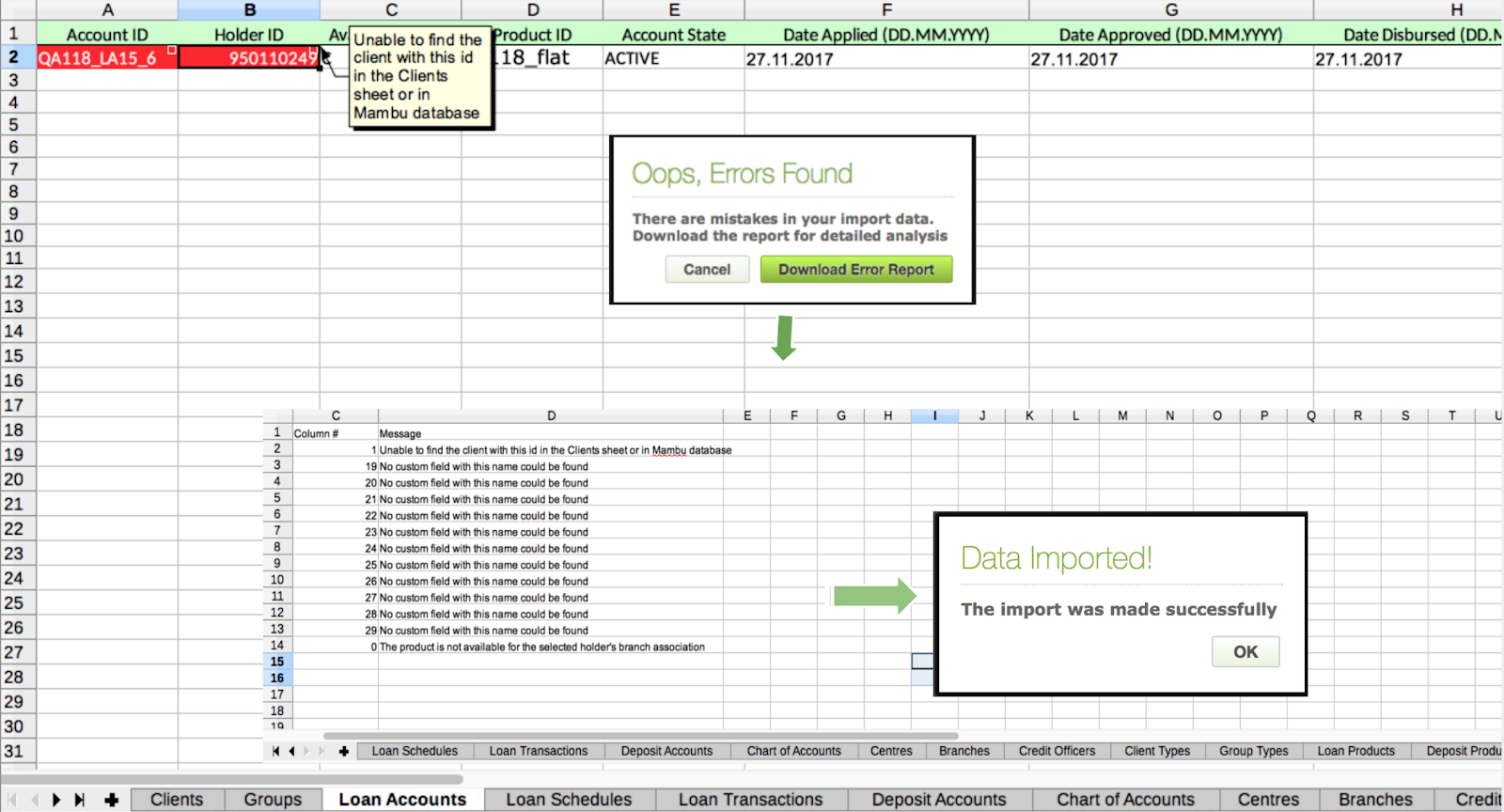
Validation successful: completing import
When validation is successful, you will see a confirmation notification is displayed on the page. When the file is fully uploaded, summary information is displayed in the Import Events section, such as how many loan accounts and clients were imported.
You will see two options: Approve and Reject.
Approving a successful import
Once you have successfully imported your data, you may either approve or reject the import.
Be sure you are ready before you approve your import. Once you do so, the migration process is complete, and it can no longer be rejected or rolled back. Any furtherchanges to data will have to be performed manually.
To approve the import, select Approve Import and select Confirm.
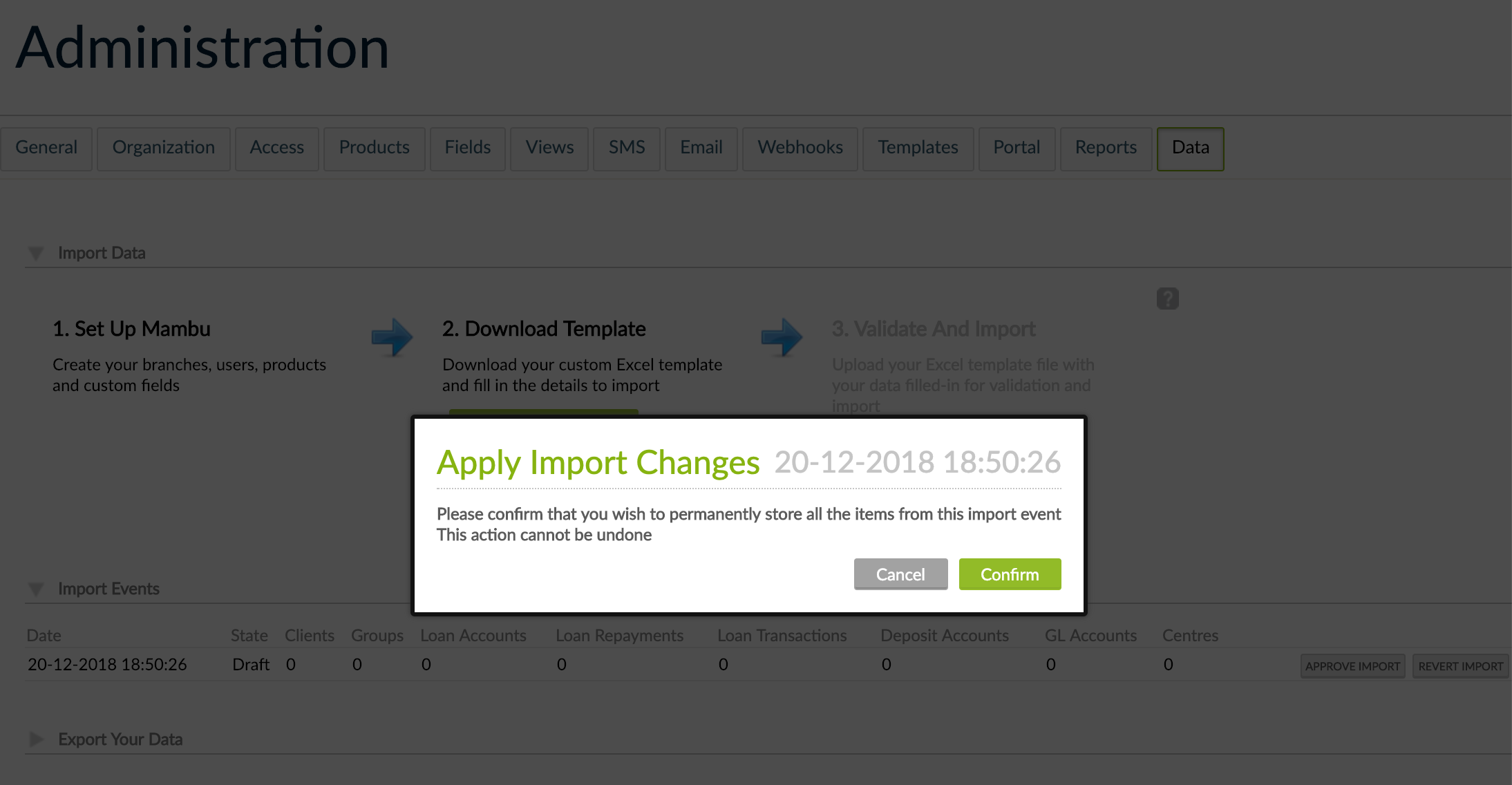
When you approve the import, its status changes from Draft to Approved.
At this point:
- All clients and groups are assigned to branches, centres, and credit officers.
- Any custom field values are filled for every entity.
- All accounts are assigned to their products.
Rejecting a successful import
If for any reason you wish to reject the import before it is approved, such as if you find that bad data has been imported, then you can reject the import by clicking on Reject Import and selecting Confirm.
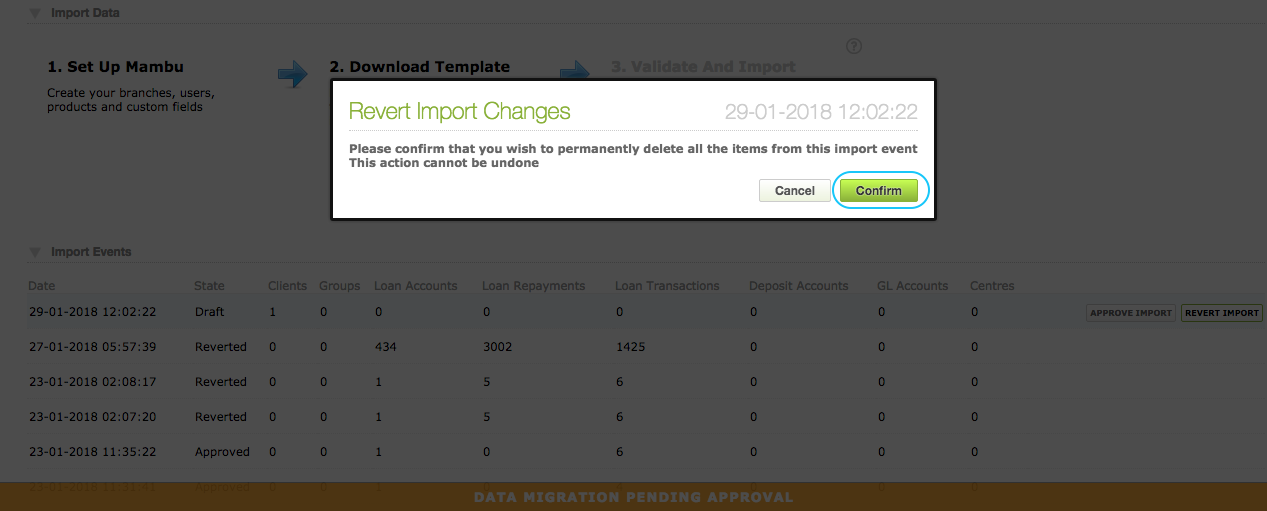
When you reject an import, its status changes from Draft to Reverted and all migrated data is deleted from the system.


